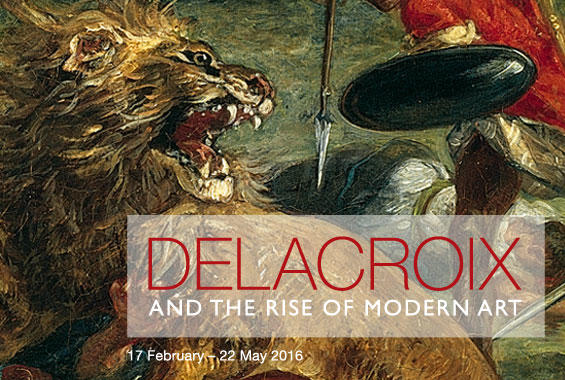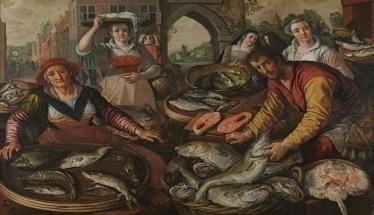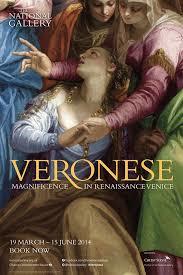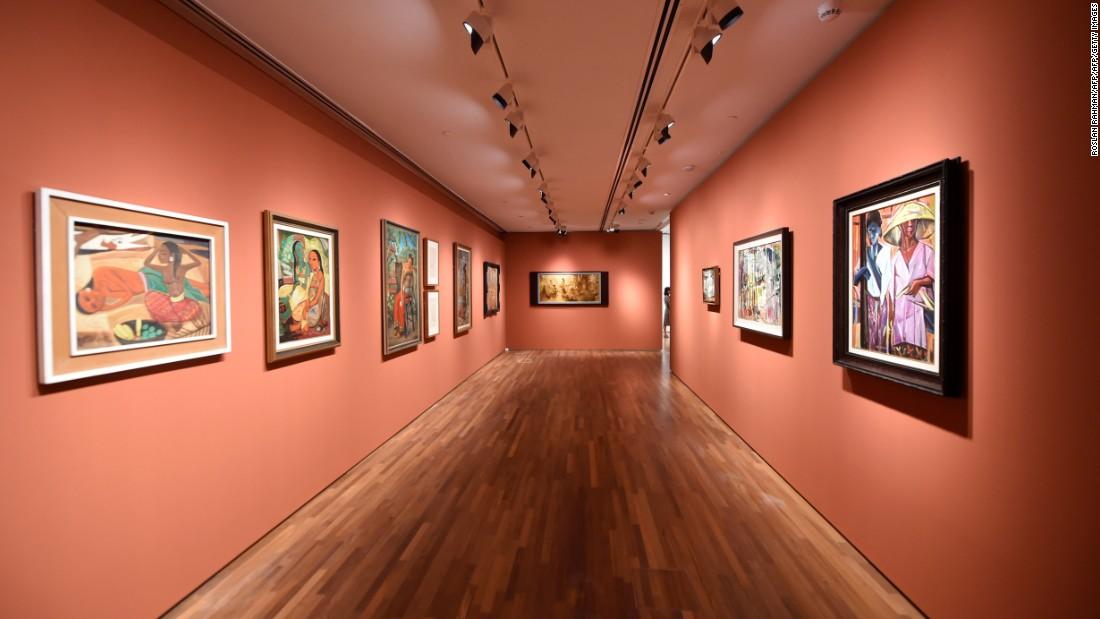Foundation
Since its foundation in 1824, the National Gallery has existed to bring the best possible pictures to the widest possible public. Officially opened on May 10, 1824, this gallery was meant to make accessible paintings from the early centuries to the public so that history of Great Britain and its relationship with the world would remain preserved for the years to come. It was freely accessible to the public and was managed by a board of trustees appointed by the government.
The gallery was initially housed Angerstein’s townhouse, but in 1832, a construction of a new building begun in Trafalgar Square under the leadership of William Wilkins. The building was completed in 1838 (Clark, 2008). Upon the completion of this building, the management board started a serious work of collecting pieces of art, especially the Western paintings.
Currently, it is home to a collection of more than 2300 paintings which dates from 13th century to late 19th century. In Langmuir’s (2007) words, the National Gallery is encyclopaedic in scope because of the wide collection of pieces of art which have significant meaning to the modern civilisation, and the path that the United Kingdom has taken over years to become a superpower in the 19th century.
In this paper, the researcher seeks to confirm that indeed since its foundation in 1824, the National Gallery has existed to bring the best possible pictures to the widest possible public. The figure below shows the current building that houses the National Gallery.

Function
According to Langmuir (2007), pictures speak louder and clearer than words. They hold heavy meanings and allow individual viewers to make personal interpretations of what they see. When a horrific war is described in words, it is often easy to consider it an act of fiction hence ignore its real consequences. However, when an image of the sufferings and deaths are pictorially presented, then the impact of war becomes real in the mind. Pictures of the past bring about a clear memory of what life was about, the challenges that people faced, and how individuals or states related.
When founded in 1824, the primary function of the National Gallery was to present to the public the paintings and pictures of the ancient times to make them aware of the country’s past, and how civilisation took shape to its current status.
The gallery had a wide scope of collection of paintings which focused on the social, economic, political, and religious aspects of life in the past. As Smith (2012) says, the gallery offered its visitors a rare opportunity to look into the past using the lens of the great artists who made concerted efforts to put into picture what they saw in their society during their times.
Collecting all these great paintings and making them available to the public was a challenging task, but the board of trustees responsible for managing the gallery knew that this was the primary function of the organisation. Currently, National Gallery is one of the most visited museums in the world because of its richness in history, and the unique manner in which it presents the way of life in the past.
Collection and Organisation
The collection and organisation of the National Gallery has transform over the years to the current highly sophisticated and precise arrangement of objects in a clear pattern that shows the trends taken in socio-economic and political life from the early centuries to 19th century. The collections are organised in a deliberate and orderly manner to make it easy for historians, anthropologists, other professionals, and the general public to draw a pattern of the changes in the way of life from the mid 13th to early 19th century.
Objects
The objects collected at the National Gallery range from the paintings of the economic welfare of the society to economic, political and religious issues. This gallery gives a clear image, presented in paintings and pictures, of the economic life of the people in the past. As Langmuir (2007) notes, it was always a struggle to achieve economic success in the past. People would fight among themselves or sometimes with wild animals in order to have provisions. The image below shows human-wildlife conflict believed to be caused by encroachment of people into forests.

In the past, people cherished hard work as a way of achieving economic success in a society that was already capitalistic in nature. Trade became one of the most important economic activities as people tried to specialise in different fields that they felt they had skills and interests. Farmers brought to the market farm produce in exchange of fish, weapons, special stones, among other items that they needed. In the painting below, traders are busy exchanging one item for the other. The painting shows that in the market, both men and women worked together without any prejudice.

The gallery also plays an important role in presenting the social life of the people in the past. Ord (2003) says that visiting the National Gallery helps one to understand how people related with one another in the past. Issues such as love, marriage, and families in the past are presented using a number of paintings and pictures. The figure below shows the intrigues of love and the challenges it presented when one was faced with the difficult task of making choices in life.

According to Smith (2012), war played a significant role in shaping kingdoms and empires during the early centuries. Nations that had great military potential expanded their territories rapidly at the expense of the weak nations. The United Kingdom and other colonies such as France and Germany were able to spread their rule beyond Europe to the rest of the world because of their military strength. The weak suffered the most during military confrontations. Paintings in this gallery such as the one shown below present these historical facts in a very memorable manner.

Reasons for the collections
According to Smith (2012), the primary reason for the collection of these paintings and pictures was to preserve the historical facts in a more memorable manner for the future generation. The works of fiction had dominated the narrative art, and the only way that some of the realities of the past could be stored was through paintings, drawings and pictures. It brought some sense of reality in it as the images painted a clear image of what happened in the past as witnessed by these artists. Inasmuch as these artists relied on their creativity to develop their works, most of their drawings, paintings and pictures were based on what they observed in the society.
Hang and how objects are displayed
The display of the objects within this great building was designed in a unique way to meet the changing needs of the public. According to Clark (2008), each corner of the gallery has a specific aspect of the historic past displayed in a systematic manner, making it easy for the viewers to understand the changes which took place with the passage of time. The figure below shows how the paintings and pictures are beautifully displayed on the walls.

The Building
The current National Gallery building was designed in the late 1930 and early 1931. After a feasibility study, the actual construction begun in 1932 and it was completed in 1938. The architectural design of this building tells the story of the value it holds within this society. When entering the building, the long stairs leading to the door gives the impression of the greatness of what one should expect while inside the building. It creates the impression that one is going high up, to a new world where great things are stored.
As shown in figure 1 above, the building itself is historic. Such buildings are very rare in the modern streets of London. Its presence at the heart of the city, and the fact it has retained its ancient architectural design makes it easy for the visitors to place the paintings, pictures, and drawings into correct historical perspective. According to Smith (2012), the National Gallery has been subject to massive expansion project as the number of visitors keeps on increasing over the years. However, the original design has never been changed because of the historical connotation it has.
The building itself gives the picture of the royal way of life in the past. Before its acquisition by the government in 1824, the gallery was a private property owned by John Julius Angerstein’s family. After the acquisition, the development of the building maintained the royal status in terms of structures and design. This makes the building a rich source of history for the visitors.
The Role of the Viewer
According to Smith (2012), when visiting the National Gallery, it is important for the viewer to understand that he or she has an important role to play in order to ensure that the collections make sense to the present society. It is easy to consider these pieces of art as a collection of beautiful works of the past meant for decoration. However, the viewer must understand that it goes beyond the beauty of what is presented in the drawings. For instance, figure 2 above shows a lion charging at a man armed with spear and a shield.
This is not just a painting but a critical piece of historical fact that may help in explaining why most of the wild animals have either disappeared or are now confined to national parks and game reserves. It shows that back in ancient times there was a war pitting humankind on one side and the wildlife on the other. As the picture shows, it was a war of winner takes all, and that is why the wildlife had to be displaced in areas dominated by humankind.
As a viewer, one is expected to make these interpretations and generate deep meaning out of simple drawings. The viewers are also expected to make contributions about how the collections can be arranged in a better way to improve the experience of the visitors. Most of the changes made to this gallery are often based on the suggestions from the viewers.
Interpretation
The location of the National Gallery has a great significance in bringing the entire community together irrespective of the social status of people within the society. It is situated at the border of the Poor East End of London and the wealthy West End (Ord, 2003). This means that it brings together people of these two different social classes without any of them feeling misplaced.
This was particularly important based in the period when it was constructed. The poor were not trusted in the elite neighbourhood because they were always associated with criminal activities. On the other hand, the rich were always not comfortable in the poor neighbourhoods for fear of being attacked, robbed, and even killed by the perceived criminals who were roaming around these regions. Having this gallery at this border area meant that both the poor and the rich were given equal opportunity to access the collections of paintings, drawings, and other pieces of art.
Political Messages
According to Smith (2012), further interpretation can be made about the location of the gallery, especially given the fact that it overlooks parliament buildings and Big Ben. It brings out an important political message to the society. At one point, the parliament was meant for the royal families only. It was the House of Lords. However, just like the historical changes which are articulately presented in the gallery, the political atmosphere in the country has changed.
From the rule by the royal family, the country has now embraced a rule by the people in a democratic system. This message of inclusiveness is also presented in the fact that this gallery receives both the poor and the rich and treats them equally. In the past, it was only the rich who could afford to own or even visit such galleries because of the high fees involved. However, the gallery promotes the concept of equity and sharing of the resources among people from all walks of life.
Propaganda
The growth of this gallery to its current prestigious position has not been without controversies. The National Gallery was accused of being overambitious in its programmes and promising the public more that it could actually deliver. According to Langmuir (2007), the gallery was eager to compete favourably against other similar galleries in the region, especially the one in Paris France.
The only way of doing this was to publicise itself to the locals to attract a steady flow of visitors to enable it expand. In the process, some of the promises made could not be fulfilled. Crookham (2009) feels that the gallery was victimised unfairly because of the high expectations of the rich in the society who forgot that this institution was established to cater for all members of the society, including the poor.
References
Clark, K. (2008). One hundred details from the National Gallery. London: National Gallery Company.
Crookham, A. (2009). The National Gallery: An illustrated history. London: National Gallery.
Langmuir, E. (2007). Masterpieces from the National Gallery. London: National Gallery.
Ord, D. (2003). The National Gallery of Canada: Ideas, art, architecture. Montréal: McGill-Queen’s University Press.
Smith, J. (2012). The National Gallery of Ireland: Handbook to the collections. London: Scala.